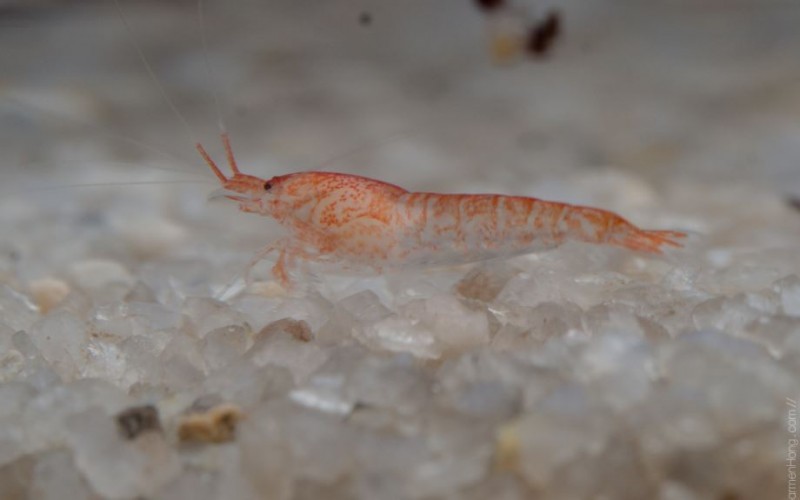
Shrimps are fascinating creatures that inhabit various aquatic environments around the world. Despite their small size, these crustaceans possess a complex anatomy that plays a vital role in their survival and interactions within their ecosystem. One intriguing fact that sets them apart from many other animals is the location of their heart, which surprises scientists and nature enthusiasts alike. In this article, we will delve into the curious world of shrimp anatomy, focusing on the peculiar location and function of their hearts.
Anatomy of a Shrimp
External Features
Before exploring the internal wonders of a shrimp, let's briefly touch upon its external features. Shrimps typically have elongated bodies, divided into three main sections: the head, thorax, and abdomen. Their exoskeleton provides protection and support, while their numerous appendages aid in swimming, capturing prey, and maintaining balance.
Internal Organs
Beyond the shrimp's exoskeleton lie its internal organs, intricately arranged to facilitate its survival. Among these organs are the digestive system, reproductive organs, and, surprisingly, the heart.
The Shrimp's Head
The Central Nervous System
The head of a shrimp houses its central nervous system, which coordinates various physiological processes. This system includes the shrimp's brain and nerve ganglia, allowing it to process sensory information and respond to its surroundings effectively.
Vision and Sensory Organs
Shrimps possess compound eyes, enabling them to detect light and movement with exceptional precision. Besides vision, they rely on sensitive antennae and other sensory organs to navigate their environment and communicate with other members of their species.
The Heart: A Surprising Discovery
One of the most astonishing revelations about shrimp anatomy is the location of their heart. Unlike most organisms, whose hearts are situated in the chest or abdominal region, a shrimp's heart is located in its head.
The Function of the Shrimp's Heart
Circulatory System
The shrimp's heart plays a crucial role in its circulatory system. The heart pumps a fluid called hemolymph, which serves as both blood and lymph. This hemolymph transports nutrients, hormones, and waste products throughout the shrimp's body.
Hemolymph and Oxygen Transport
In addition to its circulatory function, hemolymph also aids in oxygen transport. Shrimps use specialized gill structures to extract oxygen from water, which is then carried by the hemolymph to various tissues and organs.
Shrimp Adaptations
Size and Energy Efficiency
The unique location of the shrimp's heart contributes to its overall size and energy efficiency. By having the heart in its head, shrimps can streamline their bodies and reduce energy expenditure during locomotion.
Molting and Growth
Shrimps undergo periodic molting to shed their exoskeletons and accommodate growth. During this process, the heart and other internal organs must adjust to the new exoskeleton, showcasing the remarkable adaptability of these creatures.
Comparative Anatomy: Shrimp vs. Other Creatures
Insects and Arachnids
While the concept of an insect or arachnid with its heart in the head might seem bizarre, the shrimp's unique physiology has some similarities to these other arthropods.
Mollusks and Crustaceans
Shrimps are part of a larger group of animals called crustaceans, which includes lobsters, crabs, and barnacles. Within this diverse group, variations in heart location exist, but the shrimp's cephalic heart remains a distinctive feature.
Environmental Considerations
Climate and Habitat
The location of the shrimp's heart has implications for their survival in different habitats and climates. Understanding this aspect of their anatomy is essential for studying their adaptability to changing environmental conditions.
Impact on Shrimp Populations
Environmental factors and human activities can impact shrimp populations. Studying their unique physiology can provide insights into potential vulnerabilities and aid in conservation efforts.
Shrimp in Human Culture
Culinary Delights
Shrimps are not only remarkable from a scientific perspective but also highly regarded in culinary traditions worldwide. They are a popular seafood choice, appreciated for their delicate flavor and versatility in various dishes.
Shrimp as a Cultural Symbol
Beyond their culinary value, shrimps often hold cultural significance in different societies, representing anything from prosperity and abundance to transformation and growth.
Future Research and Conservation Efforts
Sustainable Fishing Practices
Given the popularity of shrimps in the culinary world, sustainable fishing practices are crucial to protect their populations and maintain ecological balance in marine environments.
Understanding Shrimp Biology
Continued research into the anatomy and physiology of shrimps can shed light on their unique characteristics and improve our understanding of these fascinating creatures.
The heart of a shrimp located in its head is an extraordinary example of nature's creativity. This unique adaptation enables shrimps to thrive in their habitats, contributing to the rich biodiversity of our oceans and waterways. As we explore the wonders of the natural world, let us appreciate the intricate details of even the smallest creatures and strive to protect their environments for future generations.
Home-Seekers Flock to Gruha Lakshmi Registration in Bengaluru
Outrage in Maharashtra: Leader Fadnavis Vows Action Against Those Defaming Savitribai Phule!
BREAKING: Gyanvapi ASI Survey, Allahabad HC Reserves Order For Aug 3